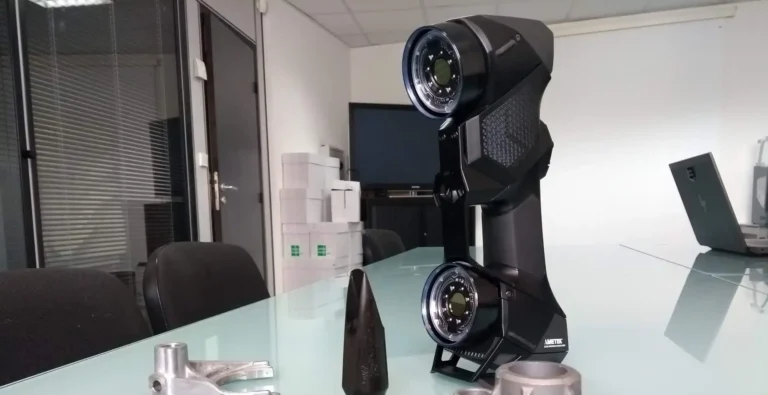The Rise of Non-Alcoholic Wine: A Guide to Benefits and Taste
In recent years, non-alcoholic wine has grown from a niche product to a popular alternative for wine enthusiasts seeking a lighter, healthier option. Whether you’re cutting back on alcohol, avoiding it for health reasons, or simply looking for a way to enjoy wine without the effects of alcohol, non-alcoholic wine provides a unique and flavorful solution. This guide will dive into the benefits, the different types available, how they’re made, and how to choose the right bottle for your next meal or celebration.
What is Non-Alcoholic Wine?
Non-alcoholic wine is exactly what it sounds like: a type of wine that contains little to no alcohol. While traditional wine is fermented from grapes, non-alcoholic wine undergoes a process to remove most or all of the alcohol content. This process allows people to enjoy the complex flavors of wine without the intoxicating effects of alcohol.
Typically, non-alcoholic wines contain less than 0.5% alcohol by volume (ABV), which is far lower than regular wines, which typically range between 9% and 16% ABV. Many wine lovers are surprised to learn that the flavor of non-alcoholic wine can be just as rich and complex as its alcoholic counterparts.
Why Choose Non-Alcoholic Wine?
The growing interest in non-alcoholic wine can be attributed to several factors. Here are some of the top reasons why people are making the switch:
1. Health and Wellness
Many people are embracing a healthier lifestyle and reducing alcohol consumption as part of their wellness routines. Non-alcoholic wine offers a way to enjoy the taste and experience of wine without the negative effects of alcohol, such as dehydration, hangovers, and liver strain. Additionally, it contains fewer calories, making it an appealing option for those watching their calorie intake.
2. Mindful Drinking
The concept of mindful drinking has become more mainstream in recent years. This movement encourages individuals to enjoy alcohol in moderation or opt for alcohol-free alternatives. Non-alcoholic wine fits perfectly into this trend, as it allows people to participate in social occasions and enjoy a sophisticated beverage without overindulging.
3. Suitable for Various Lifestyles
Whether you’re pregnant, recovering from addiction, or following a religious or personal choice to avoid alcohol, non-alcoholic wine can be an inclusive option. It allows individuals to enjoy the social experience of drinking wine without compromising their values or health.
4. Still Enjoy the Wine Experience
One of the best aspects of non-alcoholic wine is that it allows you to still savor the experience of wine tasting—appreciating the color, aroma, and complexity of the wine. It’s an enjoyable beverage for wine lovers who prefer a more moderate, alcohol-free lifestyle but don’t want to miss out on the nuances of wine culture.
The Making of Non-Alcoholic Wine
The process of creating non-alcoholic wine differs slightly from that of regular wine. Traditional wines are made by fermenting grape juice, which turns sugars into alcohol. Non-alcoholic wines undergo a similar fermentation process, but the alcohol is removed afterward.
There are several techniques used to remove alcohol from wine:
1. Vacuum Distillation
This is one of the most common methods for producing non-alcoholic wine. The wine is heated under a vacuum, which causes the alcohol to evaporate at a lower temperature, preventing the wine’s delicate flavors from being destroyed. The result is a beverage that tastes remarkably similar to the original, with only a fraction of the alcohol remaining.
2. Reverse Osmosis
Reverse osmosis involves filtering the wine through a membrane that separates alcohol and water from the wine. The alcohol is then removed, and the remaining wine is recombined with the water to restore its original flavor profile.
3. Spinning Cone Column
This high-tech method uses a spinning cone to separate the alcohol from the wine at low temperatures, which helps preserve the flavor while removing most of the alcohol content. This technique is often used by premium non-alcoholic wine producers.
What Does Non-Alcoholic Wine Taste Like?
One of the most common questions about non-alcoholic wine is whether it tastes like real wine. While it’s true that alcohol contributes to a wine’s mouthfeel and structure, many non-alcoholic wines have a rich, full-bodied flavor that mimics traditional wine quite well.
Non-alcoholic wines can vary in taste depending on the grape variety, region, and production methods. In general, non-alcoholic red wines are smooth and fruit-forward, with flavors like cherry, blackberry, and plum. Non-alcoholic white wines often feature crisp, citrusy notes, with flavors of green apple, melon, and floral undertones.
It’s important to note that the taste of non-alcoholic wine can evolve as it is chilled, poured, and aerated, much like traditional wine. While some may find that non-alcoholic wine lacks the body or intensity of regular wine, many others appreciate its clean and refreshing qualities.
Types of Non-Alcoholic Wine
Non-alcoholic wine comes in several varieties, just like traditional wine. Here are the main types you can expect to find:
1. Non-Alcoholic Red Wine
Non-alcoholic red wine tends to have deep, rich flavors with hints of berries, spices, and sometimes even oak. Popular grape varieties for non-alcoholic reds include Merlot, Cabernet Sauvignon, and Pinot Noir. These wines are perfect for pairing with hearty dishes like pasta, grilled meats, or charcuterie.
2. Non-Alcoholic White Wine
Non-alcoholic white wines are typically lighter and crisper, with notes of citrus, apple, or pear. Common varieties include Chardonnay, Sauvignon Blanc, and Pinot Grigio. These wines are great choices for pairing with seafood, salads, and lighter fare.
3. Non-Alcoholic Sparkling Wine
Sparkling wines like Champagne and Prosecco are also available in non-alcoholic versions. These wines maintain the refreshing bubbles and crisp, fruity flavors of their alcoholic counterparts, making them an excellent choice for celebrations, toasts, or simply enjoying on a warm afternoon.
4. Non-Alcoholic Rosé Wine
Rosé has become increasingly popular, and fortunately, there are many non-alcoholic rosé wines to choose from. With notes of strawberries, raspberries, and floral elements, non-alcoholic rosé offers a light and refreshing option for those seeking a drink that’s slightly more aromatic.
How to Choose the Right Non-Alcoholic Wine
With so many options on the market, selecting the right non-alcoholic wine can feel overwhelming. Here are some tips to help you find the perfect bottle:
1. Consider Your Flavor Preferences
If you typically enjoy a full-bodied red wine, you may prefer a non-alcoholic red made from Cabernet Sauvignon or Merlot. If you’re more into crisp whites, look for a Sauvignon Blanc or Chardonnay. Always consider the flavor profile you enjoy when choosing a non-alcoholic wine.
2. Look for Quality Brands
While there are many non-alcoholic wines available, some brands are known for producing higher-quality products that preserve the integrity of the original wine. Researching reviews or asking for recommendations can help guide you to the best choices.
3. Pair with Food
Think about what foods you plan to enjoy with your wine. Lighter wines like Sauvignon Blanc and Prosecco pair well with seafood and salads, while fuller-bodied reds like Merlot are perfect for grilled meats and pasta dishes. Be sure to select a non-alcoholic wine that complements the flavors of your meal.
4. Check the Alcohol Content
Make sure the wine you choose contains less than 0.5% alcohol by volume (ABV) to ensure it’s truly non-alcoholic. Some products may contain small traces of alcohol, but they are generally considered safe for those avoiding alcohol.
The Future of Non-Alcoholic Wine
The market for non-alcoholic wine is growing rapidly, with more and more producers creating innovative and high-quality options. As more people adopt mindful drinking habits and seek healthier alternatives, non-alcoholic wine is expected to continue its rise in popularity.
As the industry grows, we may see new varieties and flavors emerge, offering even more options for those seeking the taste of wine without the alcohol. This trend signals a bright future for those who want to enjoy wine without compromise.
Conclusion
Non-alcoholic wine is more than just a passing trend—it’s a legitimate option for anyone seeking a healthy, mindful, and inclusive way to enjoy wine. With its diverse range of styles and flavors, non-alcoholic wine offers a sophisticated alternative for those who want to reduce alcohol consumption or avoid it altogether. Whether you’re having dinner, celebrating a special occasion, or simply enjoying a relaxing evening, there’s a non-alcoholic wine that can elevate your experience without the effects of alcohol.






